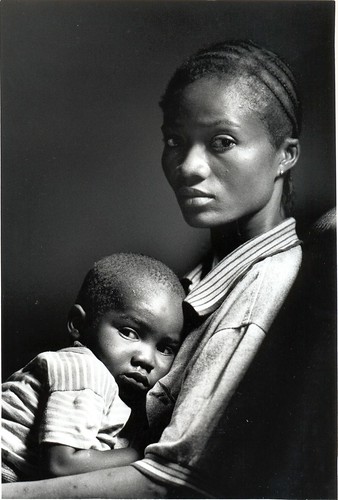>>>>>HIV, Pregnancy, Maternal and Child health<<<<<<
It has been estimated that 1.5 million HIV positive women become pregnant every year, which means that about 600,000 children are infected every year by vertical transmission. The figures from selected pre-natal clinics in urban areas reveal an incidence of HIV among pregnant women in sub-Saharan Africa of over 25%. In 2005, in LHDIC (Low Human Development Index Countries) only 9% of pregnant HIV-positive women received an antiretroviral prophylaxis to prevent transmission of the virus to their children, a modest increase of 3% compared with 2003. In these countries infection is associated with an increased risk of: spontaneous miscarriage, ectopic pregnancy, stillbirth, premature labour, premature rupture of membranes, urogenital infections, syphilis. In industrialized countries the incidence of vertical transmission of the virus has fallen to minimal levels, as low as 2%, thanks to the introduction of antiretroviral therapy, the use of Caesarean section, and artificial feeding. In Africa, instead, where these operations are not widespread and not always available and where breastfeeding for long periods is normal, the vertical transmission of the virus is still around 25 to 40%.
PMTCT (Prevention Mother to Child Transmission) and PPTCT PLUS (Parental Prevention to Child Transmission)
Vertical transmission can occur at various stages: during pregnancy, birth, or breastfeeding. In LHDIC the prevention of vertical transmission by seropositive mothers is achieved through diverse interventions including:
- Services to promote maternal and infant health (pre- and postnatal).
- Counselling and testing services. - Promotion of alternatives to breastfeeding and/or early interruption of the same.
- Optimized and non invasive obstetric procedures - Preventive antiretroviral therapy for the mother and child.
- Antimalarial prophylaxis, since it has been demonstrated to reduce vertical transmission.
It is important to guarantee all women access to counselling and to VCT (Voluntary Counselling Testing).
The breastfeeding stage is the most delicate and difficult to deal with. The WHO estimates that 94% of children in the world are breastfed. 79% continue to one year and 52% up to two years. Breastfeeding over six months is common in sub-Saharan Africa and in Asia. Without antiretroviral prophylaxis or other effective intervention to prevent the vertical transmission of HIV, breastfeeding that extends for two years or more can increase the risk of transmission of HIV by about 40%. About 5 to 20% of infants are infected in the post-natal period and the risk increases progressively with the duration of breastfeeding. However, the alternative to breastfeeding, artificial feeding, is recommended only where it is easy to guarantee the supply of powdered milk and clean drinking water. In LHDIC artificial feeding may lead to the development of very serious problems. Bearing in mind that regarding breastfeeding there are no unanimous and general recommendations and that every intervention depends on the operative context, it is advisable to abide by the strategies proposed by the Ministry of Health in each individual country, which in turn are derived from general recommendations of the WHO.
Case study: PMTCT and PPTCT PLUS in Zimbabwe
http://www.cesvi.eu/UserFiles/File/Hiv-Aids_Zimbabwe.def.pdf
Cover photos by Giovanni Diffidenti
.
DONATE NOW:
http://donazioni.cesvi.org/index-ing.asp
Uploaded by ! . © Angela Lobefaro . ! on 3 Dec 09, 12.35AM CET.
03 December, 2009
To Be or Not to be HIV-positive
Posted by
Angela Lobefaro
at
4:44:00 PM
![]()
Subscribe to:
Post Comments (Atom)






No comments:
Post a Comment